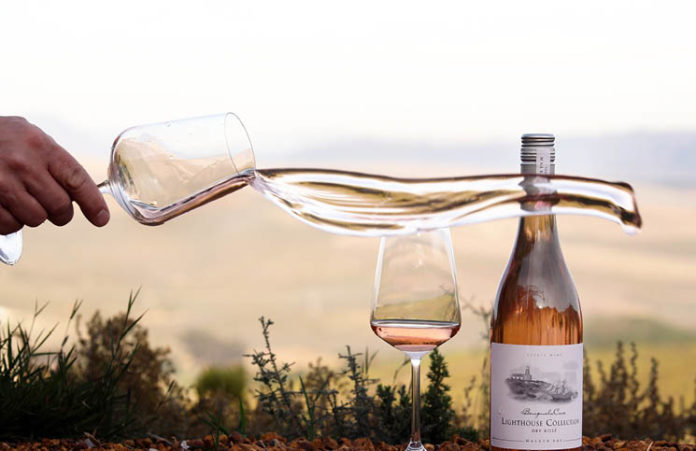
There is white wine, rosé and red wine. Sadly “rosé” or the middle-child of wine always had a bit of a bad rap under the consumer nose. The misconception has been that this is the in between-wine, the haphazard mix of red and white, the afterthought, or the sweet party pleaser.
Alas, not only layered with flavour and delicious fruit aromas, this wine reveals some interesting historical and contemporary facts.
With summer fast approaching, this is the wine that you should shamelessly stock up on. It echoes the South African lifestyle where we celebrate the outdoors, red painted skies and beautiful food that match this colour. And, you want to serve it ice cold on a sweltering day.
Known as rosé in France and South Africa, the Italians calls it Rosato and in the Spanish says Rosado. But it was most certainly the ancients Greeks who dabbled with this style first and the very first wine most probably resembled a shade of pink. The French revived it in the 1930’s when mandatory vacation days were introduced and families travelled to Provence to soak up the sun. Soon Rosé became synonymous with fun and celebrations.
Seen as the “ladies” drink it was nicknamed “blush” or “pink”, but research supports that this category is finally showing more muscle as “brosé”. There has been a significant growth in the premium rosé category and the lads are taking up a major share in this trend.
But how is rosé made? There are three ways:
The first technique is to crush and press black grapes in the same way as one would treat white grapes. These grapes are managed in the vineyard to become rosé and picked at the appropriate ripeness to maintain freshness and acidity in the final wine. The juice spends a breath of time on the skins and extract only a little bit of colour to achieve a delicate shade of pink.
The second method is called saignée – the French word for bleeding. This is where black grapes are harvested to make red wine, crushed and allowed to macerate for colour and flavour extraction. The winemaker will keep an eye on the colour and when the perfect shade is achieved, the desired amount of juice is drained off the skin and fermented as if it were a white wine.
The last method is to add red wine to white wine. This should not be confused for black and white grapes that is co-fermented to become rosé – that relates to the first method. This third method is primarily used to make inexpensive, fruity wines.
So don’t hide your pink in the fridge or behind the menu in the restaurant. Enjoy those luscious aromas that can vary from red berries, rhubarb, watermelon and candyfloss to more savoury notes like lemon verbena and thyme.
Albeit this style was tarnished with inferior examples in the past, consumers now have an array of styles to choose from: dry, off-dry, semi-sweet and some of the finest MCC has a sparkling pink in the line-up. Enjoy it with sushi, pizza, seafood and summer salads. It also adds freshness to a spicy curry.
Win a case of rosé! Benguela Cove Wine Estate ran a campaign that shared fun facts about rosé. Post a picture of yourself enjoying rosé or anything that relates to their campaign on Facebook, and stand the chance to win a case of their new Lighthouse Rosé 2019. The winner will be announced on 30 October 2019.
Article by Samarie Smith, a certified wine taster and judge, and brand manager for Benguela Cove

